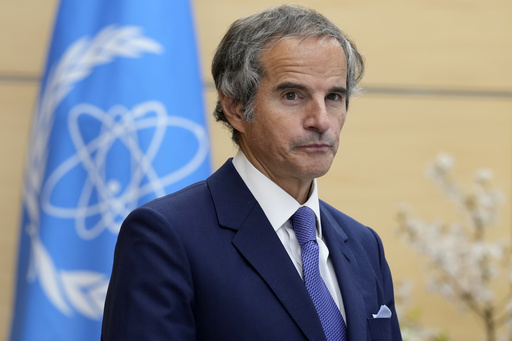The head of the United Nations’ nuclear regulatory body announced plans to visit Iran in the coming days to discuss the country’s nuclear ambitions. This visit occurs against a backdrop of escalating tensions in the Middle East, particularly due to the ongoing Israel-Hamas conflict, and amid speculation about how President-elect Donald Trump will handle relations with Iran following his inauguration in January.
Mariano Grossi, the Director General of the International Atomic Energy Agency (IAEA), is scheduled to meet with senior officials from the Iranian government. These high-level discussions will focus on technical matters stemming from a joint agreement made with Iran in March 2023, which aims to enhance cooperation between the IAEA and Iran in expanding nuclear inspections.
The March 2023 agreement includes Iran’s commitment to address concerns raised by inspectors regarding possible undisclosed nuclear activities and to facilitate further verification and monitoring efforts by the IAEA. Grossi’s upcoming meetings in Tehran will build upon his previous conversations with Iranian Foreign Minister Abbas Araghchi during the United Nations General Assembly in September, as stated by the IAEA.
Grossi emphasized the importance of making tangible advancements in executing the March 2023 agreement, declaring his Tehran visit as crucial to achieving this goal. Recent IAEA reports indicate that Iran is rapidly progressing in its nuclear pursuits and is steadily increasing its stockpile of uranium, enriched to levels close to weapons-grade, in defiance of global calls for restraint.
The director general noted that Iran possesses sufficient uranium enriched to near-weapons-grade levels, potentially allowing for the construction of “several” nuclear bombs should it choose that route. He also admitted the agency lacks certainty that none of Iran’s centrifuges have been covertly diverted for unauthorized enrichment activities.
In 2015, Iran reached a significant nuclear agreement with several world powers that imposed restrictions on its nuclear program—a situation that the West viewed as a preventative measure against creating nuclear weapons, although Iran asserts its aims are solely peaceful. This deal also resulted in the lifting of economic sanctions. However, the agreement unraveled after the Trump administration withdrew the U.S. from the pact in 2018, compelling Iran to disregard all imposed limitations and escalate its uranium enrichment up to 60% purity.
This level is only slightly below the weapons-grade threshold of 90%, with the IAEA estimating that around 42 kilograms (92.5 pounds) of uranium at 60% enrichment could theoretically produce one atomic bomb.
As Trump prepares to reassume the presidency in a few weeks, opinions in Iran are divided regarding what his new administration might entail. Some predict that the return of Trump could precipitate direct conflict between Tehran and Washington, especially given the existing tumult in the region, while others remain hopeful for diplomatic engagement reminiscent of Trump’s unexpected outreach to North Korea.



